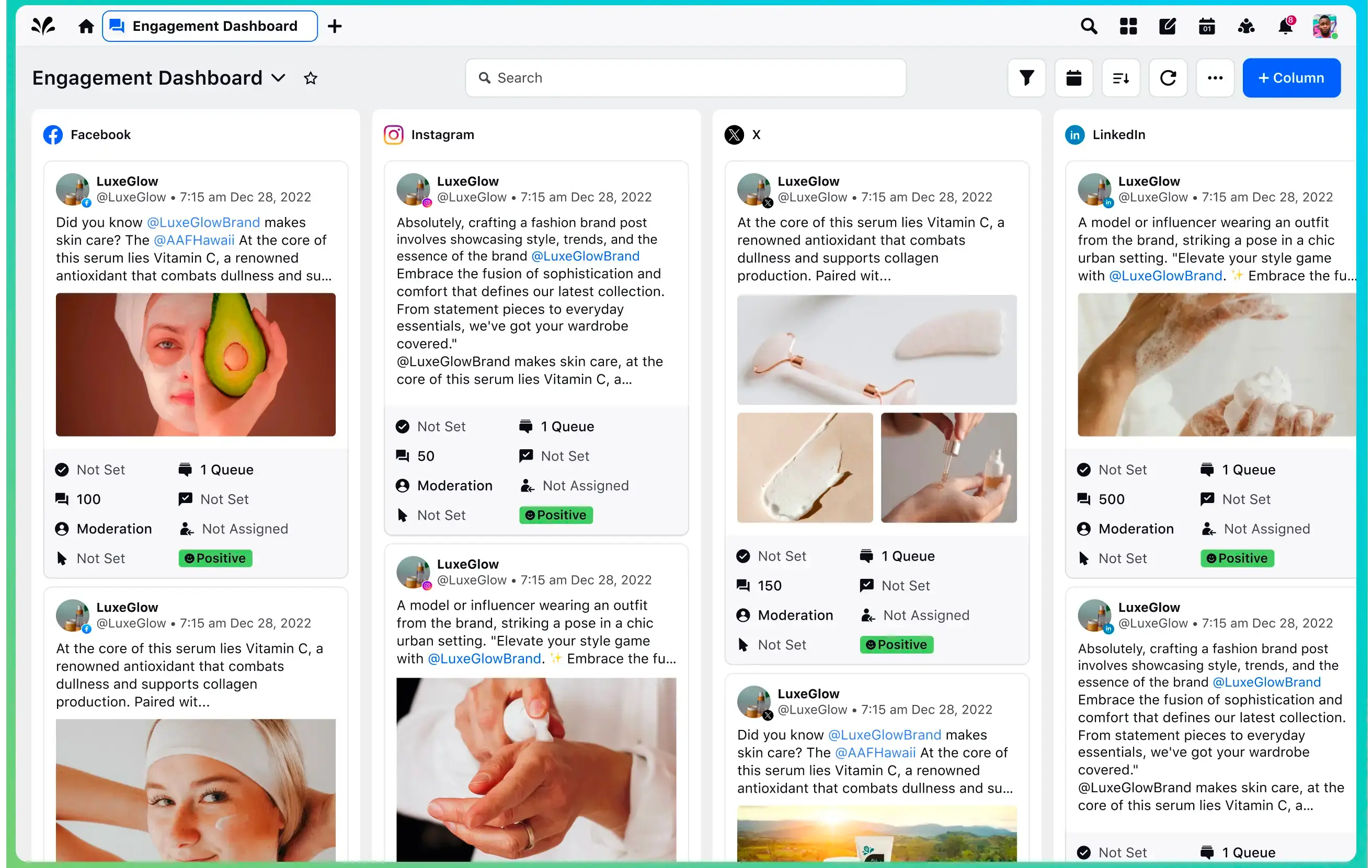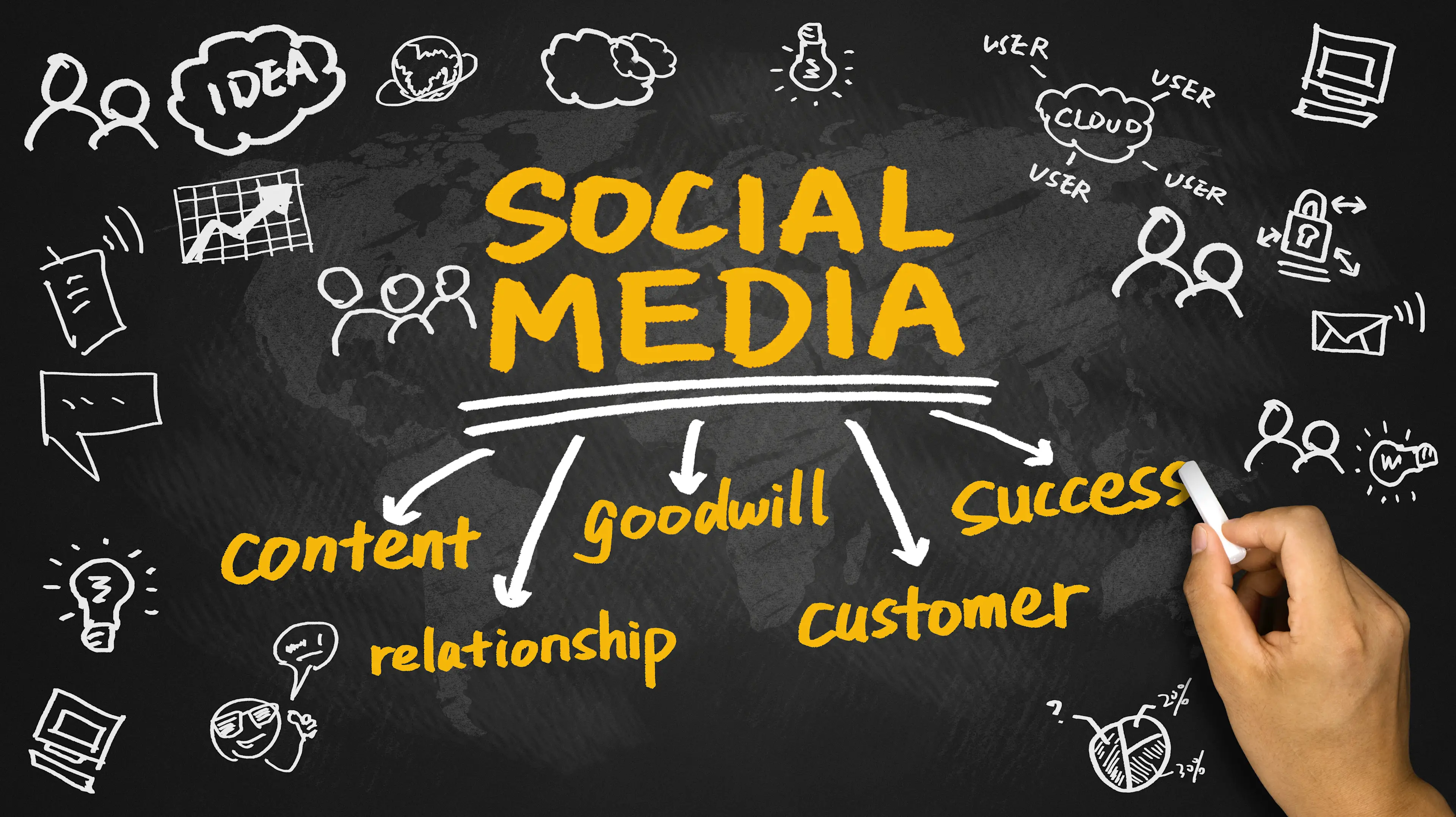The undisputed leader in social media management
For over a decade, the world’s largest enterprises have trusted Sprinklr Social for its in-depth listening, unmatched channel coverage, enterprise-grade configurability and industry-defining AI.

How to Run and Track Social Media Experiments
Social media is a dynamic space, ridden with sudden algorithmic changes and volatile trends. What's effective today may be redundant tomorrow. Running social media experiments is a surefire way to test new ideas and avoid costly mistakes. They guide evidence-driven decisions, helping you win stakeholder trust and giving you confidence to try new things.
Additionally, social media experiments yield unknown and untapped insights about your audience, which helps social media executives like you to fine-tune and target your campaigns better. You are more prepared to adapt your social media strategy since you’ve been studying user behaviors.
However, running social media experiments comes with certain caveats. The ROI from experiments remains heavily reliant on fickle social media algorithms, click-happy users and unpredictable social media trends. No amount of testing or planning can dispel the uncertain nature of social media marketing, so consider yourself forewarned 😅.
With disclaimers out of the way, let's begin our simple 7-step framework for running and tracking experiments on social media.
- 6 Steps to run social media experiments and gauge their success
- 1. Define your objective
- 2. Crafting hypotheses
- 3. Choose your variables
- 4. Plan the schedule for running your experiments
- 5. Run your social media experiment
- 6. Analyze and learn from the results
- Run and verify experiments on 30+ digital channels with Sprinklr
6 Steps to run social media experiments and gauge their success
1. Define your objective
Well-defined, measurable goals set the foundation for a successful social media experiment. Goals are critical to your success since they:
- Sharpen your focus
- Build alignment in teams
- Drive smarter choices
- Help track wins objectively
- Fuel creativity and drive
To set social media goals for your experiment, ask yourself, "What do I want to achieve with this social media experiment?" whether it's amplifying brand awareness, driving website traffic or increasing conversions via social media.
Each of these goals requires different strategies, metrics and tools. For example, if you aim to boost brand awareness, you may focus on particular social media metrics like reach, impressions, and engagement rates. But if your goal is to drive conversions via social media, you pay closer attention to conversion rate and cost per acquisition.
2. Crafting hypotheses
A hypothesis is an educated guess or prediction about the outcome of your social media experiment, which is based on existing knowledge about:
- Your current social media strategy: Assess what you are currently doing in terms of content, posting frequency and engagement tactics. This baseline understanding helps you identify what changes might bring about the desired outcome.
- Your audience split by social network: Understanding where your audience spends their time and how they behave on each platform will inform your hypothesis and experiment design.
- Your current social media performance: Analyze key social media metrics such as engagement rate, reach and conversion rates. This way, you set realistic expectations for your experiment’s outcomes.
Let’s illustrate the concept of hypothesis with an example. Picture this: Your audience spends considerable time on Instagram and responds well to influencer-generated content. Your goal is to drive engagement via influencer marketing. Here is what your experiment, hypothesis and outcomes might look like:
Your hypothesis: Posting more influencer content to increase engagement by 15%.
Your experiment: Orchestrating an influencer takeover for a period of 2 weeks.
Expected outcome: Your engagement numbers should increase incrementally over the experiment duration.
But do you know your audience’s favorite influencers?
Tap into real-time data with social listening tools to track mentions and sentiments tied to specific influencers. This helps you spot rising stars before they become mainstream and catch real-time conversations that might not be evident through direct interactions. You may even scout for audiences who mirror your current fans but engage with other influencers. So, you can smartly align your campaigns with influencers who have a proven track record with similar demographics.

Want to experience a powerful way to check the pulse of who is truly influencing your audience? Try out Sprinklr Social Listening for free.
3. Choose your variables
Variables are the modifiable components within your content that you can alter and compare to gauge their impact on your social media performance.
Social media offers a plethora of variables to choose from for your experiments. Try running A/B tests for the variables below:
- Headlines: Check for different headline styles to see which captures more attention.
- Images: Experiment with different types of images (e.g., illustrated, photographic, animated) to determine which drives higher customer engagement.
- Captions: Try varying the length, tone and style of your captions to see what resonates best with your audience.
- Hashtags: Use different hashtags to see which combinations increase your reach and engagement.
- Post Length: Vary the length of your posts to find the optimal word count for engagement.
- Tone: Test different tones, such as casual versus formal, to see which aligns better with your audience’s preferences.
- Format: Experiment with different content formats like text, images, videos, carousels, and stories to find the most effective one.
- Timing: Adjust the timing of your posts to identify when your audience is most active and responsive.
- Frequency: Change how often you post to find the right balance that maximizes engagement without overwhelming your audience.
- Platform: Test posting on multiple social media platforms to see where your content performs best.
As a best practice, start with a single variable to maintain the integrity of your experiment. For example, if you decide to test the impact of post timing, keep all other elements consistent and only vary the time at which you post.
✨ Diversify your experiments with generative AI
Generative AI fast-tracks your ability to run multiple social media experiments. It automates the heavy lifting, crafting diverse content variations in a snap and keeping your varied messages consistent during each run. Sprinklr AI+ can curate targeted messaging for your audiences while breezing through content checks with AI-powered grammar and tone review — all before you let the experiment hit the ground.

Speed up every step of your experiment, from ideation to execution, with Sprinklr AI+.
4. Plan the schedule for running your experiments
Define a timeframe for your social media experiments that matches the pace of expected changes in your metrics.
For example, quick adjustments such as altering hashtag usage may show noticeable results within a few days. This is because hashtags can immediately affect the discoverability and reach of your posts.
Conversely, big shifts like using more video content or changing your content tone might take weeks to months to generate meaningful data. These changes often need time to build momentum and gain traction with your audience.
Here are some tips for planning your experiment schedule effectively:
- Define duration: Establish specific start and end dates for your experiment. This helps maintain consistency and ensures that you systematically track the changes.
- Be patient: For experiments involving gradual changes, allow ample time for the algorithm to adjust and for your audience to respond. Patience is key to gathering accurate and reliable data.
- Monitor regularly: While your experiment runs, monitor social media metrics regularly to detect emerging trends or deviations promptly. This can also help make necessary adjustments if something isn’t working as expected.
Must Read: Guide to Creating a Social Media Content Calendar in 2023
5. Run your social media experiment
When you're running a social media experiment, precision in content delivery is key. That's where a social media management tool can help you. It ensures that your content is published consistently according to your experiment's design, eliminating human error and bias from the scheduling process. It ensures every post goes out exactly when planned, allowing you to measure the impact of each time slot without any overlap or confusion.
Must Read: 8 Best Practices to Ace Your Social Media Marketing
6. Analyze and learn from the results
After wrapping up your social media experiment, dive deep into the data to evaluate how things went. Here's how to do it effectively:
- Compare results to hypotheses: Start by checking if the results matched what you expected. If there's a difference, investigate why. Look for any variables in your experiment that didn't go as planned or external factors that could have influenced the outcomes.
- Identify influencing factors: Think about what else might have affected your experiment beyond the obvious. Was there a trending topic that distracted your audience? Did platform algorithms change? Understanding these elements helps you better interpret your results.
As mentioned initially, social media moves fast. Acing your social media strategy demands thoughtful planning, strategic execution and diligent analysis.
Read More: Social Media Analytics 101
Run and verify experiments on 30+ digital channels with Sprinklr
As social media evolves, staying flexible is a must, especially when you're juggling experiments across multiple channels. Think of it like this: each platform is a different stage and your strategy needs to adapt to perform its best on each one. Whether you're aiming to ramp up likes, grow your follower base or just create more engaging content, you need a bird’s eye view on how your experiments perform on each platform.
Sprinklr Social makes it simple. Trusted by global brands for over a decade, Sprinklr Social aims to unify a brand's social presence across products, teams and geographies. Book a free demo today.



